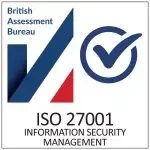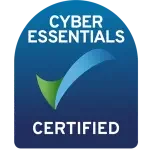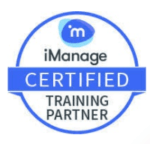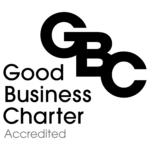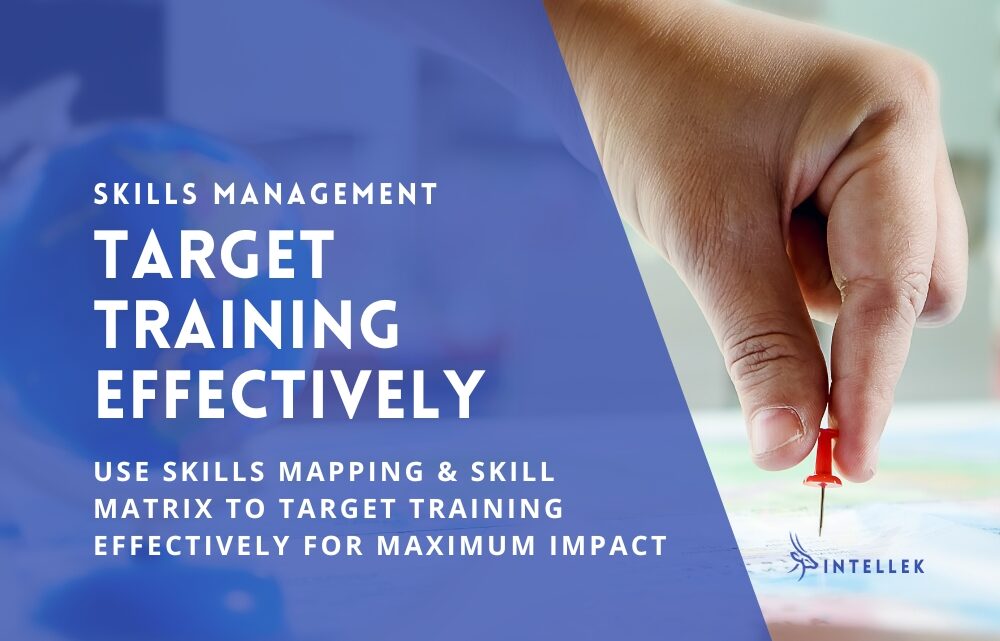
Unlocking the full potential of your workforce isn’t just a noble aspiration; it’s a strategic imperative. In a rapidly evolving business landscape, the ability to adapt, innovate, and excel in the face of change is what sets successful organizations apart.
The secret sauce? Skills mapping.
As an HR manager or Learning and Development (L&D) professional, you’ve likely heard the buzz about skills mapping, but have you truly harnessed its transformative power? In an era where skills shortages are a constant challenge and employee development is no longer a mere perk but a necessity, understanding how to use skills mapping to target training effectively is your key to maximizing impact.
In this article, we’re diving deep into the world of skills mapping, unveiling its hidden potential, and addressing the burning questions that have been keeping you up at night. Get ready to revolutionize your training and assessment strategy, supercharge employee development, and drive your organization to new heights.
It’s time to harness the true power of skills mapping.
IN THIS ARTICLE...
What is Skills Mapping?
In short, skills mapping is a way to rank your employees’ ability to perform a specific skill. Skills mapping is the process of identifying and analyzing the skills and knowledge of employees within a company.
One of the key benefits of skills mapping is to help identify skill gaps among employees, allowing management to target training programs to fill those gaps and development efforts where they are most needed. Skills mapping can also be used to identify opportunities for employee development, career progression, and succession planning.
What are the Benefits of a Skills Map?
Skills mapping offers a plethora of benefits, here are some of the key advantages:
- Strategic Workforce Planning: Skills mapping helps in identifying current skill gaps within the organization and forecasting future skill needs. This enables more informed and strategic workforce planning, ensuring that the right talent is in place when and where it’s needed.
- Targeted Training and Development: With a clear understanding of the skills employees possess and those they lack, HR and L&D teams can design and deliver training programs that are highly targeted. This means no more one-size-fits-all training initiatives, resulting in more efficient use of resources and improved learning outcomes.
- Employee Engagement and Retention: When employees see that their organization is invested in their professional growth and development, they are more likely to be engaged and committed. Skills mapping can lead to tailored career development plans, which, in turn, boost retention rates and reduce turnover.
- Improved Performance Management: Skills mapping provides a structured way to assess employee performance and identify areas for improvement. This data-driven approach enhances performance management discussions, making them more objective and constructive.
- Talent Acquisition: It aids in identifying talent gaps that may be filled through recruitment. When you know precisely what skills are lacking in your current workforce, you can target external candidates with those specific skills.
- Succession Planning: Skills mapping is invaluable for identifying potential successors for key roles within the organization. It ensures that there are employees with the right skills and experience ready to step into leadership positions when needed.
- Cost Savings: By targeting training and development efforts more effectively, organizations can reduce unnecessary spending on training that doesn’t address critical skill gaps. This leads to cost savings in the long run.
- Competitive Advantage: Organizations that invest in skills mapping and development gain a competitive edge. They adapt more quickly to market changes, innovate faster, and can respond effectively to new challenges.
- Data-Driven Decision Making: Skills mapping provides HR and L&D professionals with concrete data that can guide decision-making processes. It makes it easier to measure the ROI of training programs and adjust strategies as needed.
- Enhanced Employee Morale: Employees appreciate when their skills and career aspirations are taken into account. Skills mapping can boost morale and job satisfaction by showing employees that their growth and development are valued.
A well-implemented skills mapping process is a strategic tool that not only aligns workforce capabilities with organizational goals but also contributes to improved employee engagement, performance, and long-term competitiveness. It’s a win-win for the entire organization.
How do I do Skills Mapping?
Skills mapping is a strategic process that involves identifying, assessing, and documenting the skills and competencies of your workforce. It’s a valuable tool for HR managers and L&D professionals to align employee skills with organizational goals and create targeted training and development programs.
Remember that skills mapping is a dynamic process that evolves with your organization. It provides valuable insights for strategic decision-making, talent development, and achieving long-term organizational success.
Here’s our step-by-step guide on how to do skills mapping:
1. Define Your Objectives
Start by clarifying the objectives of your skills mapping initiative. Determine why you are conducting skills mapping and what you hope to achieve. Are you addressing skill gaps, planning for succession, or enhancing workforce agility?
2. Identify Key Stakeholders
Identify the key stakeholders involved in the process, including HR, L&D, department heads, and employees themselves. Ensure everyone understands the purpose and benefits of skills mapping.
3. Create a Skills Framework
Develop a skills framework or taxonomy that categorizes skills relevant to your organization. This framework should include both technical (job-specific) and soft skills. Ensure it aligns with your organization’s goals and job roles.
4. Data Collection
Collect data on employee skills. This can be done through surveys, self-assessments, manager assessments, or performance reviews. Consider using a combination of quantitative and qualitative methods to gather comprehensive information.
5. Skill Assessment
Evaluate the skills data collected. Identify current skills, proficiency levels, and any skill gaps that may exist within your workforce. This step may involve rating skills on a scale or using a competency assessment tool.
6. Skill Documentation
Document the skills data in a structured format. This can be done using spreadsheets, databases, or specialized HR software. Ensure that the data is organized and accessible for analysis.
7. Analysis and Visualization
Analyze the skills data to identify trends, patterns, and areas of improvement. Visualize the data through charts or graphs to make it easier to understand and communicate with stakeholders.
8. Identify Training Needs
Based on the skill gaps identified, determine the training and development needs of employees. Prioritize these needs according to their impact on organizational goals and employee roles.
9. Develop Training Programs
Design and implement targeted training and development programs to address the identified skill gaps. Ensure that these programs are aligned with the skills framework and tailored to individual and team needs.
10. Monitor Progress
Continuously monitor and track the progress of employees in acquiring new skills and closing skill gaps. Use regular assessments and feedback mechanisms to gauge improvement.
11. Feedback and Iteration
Gather feedback from employees and managers about the effectiveness of training programs and the skills mapping process itself. Use this feedback to make improvements and adjustments as needed.
12. Integration with HR Processes
Integrate skills mapping into HR processes such as performance management, career development, and succession planning. Ensure that it becomes a part of your organization’s ongoing talent management strategy.
13. Communication and Engagement
Communicate the results of skills mapping and the benefits to employees. Engage employees in their own development plans and encourage a culture of continuous learning.
14. Regular Updates
Skills mapping is not a one-time effort. It should be an ongoing process that is updated regularly to adapt to changing business needs and evolving skill requirements.
Are Skill Mapping and Competency Mapping the same?
Skill mapping and competency mapping are related concepts, but they are not the same. They both involve assessing and analyzing the skills and capabilities of employees within an organization, but they focus on different aspects and serve distinct purposes:
Skill Mapping
- Skills-Centric: Skill mapping primarily focuses on identifying and documenting the specific skills possessed by employees. These skills can be technical, job-specific, or soft skills, such as communication or problem-solving.
- Tactical: Skill mapping is often more tactical and is used to understand the immediate skill set of employees. It is especially useful for workforce planning, training needs analysis, and ensuring employees have the skills required to perform their current roles effectively.
- Short-Term: Skill mapping tends to have a shorter-term perspective and is concerned with addressing immediate skill gaps and training needs.
Competency Mapping
- Competency-Centric: Competency mapping, on the other hand, looks at a broader set of attributes and characteristics that contribute to an employee’s overall effectiveness in their role. This includes not only skills but also behaviors, traits, knowledge, and abilities.
- Strategic: Competency mapping is often more strategic and aligned with the long-term goals and vision of the organization. It helps in identifying the core competencies required for success in various roles and aligning them with the organization’s strategic objectives.
- Holistic: Competency mapping takes a holistic view of an employee’s potential and growth, encompassing not only their current skills but also their potential for development and progression within the organization.
In essence, skill mapping is a subset of competency mapping. While skill mapping focuses on specific skills, competency mapping looks at a broader range of factors that contribute to an employee’s overall competence and effectiveness in their role. Depending on the organization’s needs and goals, it may use one or both of these mapping approaches to manage and develop its workforce effectively.
What is a Skill Matrix in HR?
A skill matrix, also known as a competency matrix or skills matrix, is a tool used in human resources (HR) and organizational management to visually represent and assess the skills, competencies, and qualifications of employees within an organization.
Overall, a skill matrix is a versatile HR tool that promotes data-driven decision-making, enhances talent management, and contributes to the strategic alignment of an organization’s workforce with its goals and objectives.
Why is a Skill Matrix Important?
The primary purpose of a skill matrix is to provide a clear overview of the skills and capabilities of the workforce, making it easier for HR managers and decision-makers to align employee skills with organizational goals and make informed decisions about recruitment, training, and career development.
Uses and Benefits of a Skill Matrix in HR:
- Talent Management: HR managers can use skill matrices to identify talent gaps and surpluses within the organization. This information is crucial for strategic workforce planning and making informed decisions about hiring, promotions, and transfers.
- Training and Development: Skill matrices help identify areas where employees may need additional training or development to meet job requirements or career goals. This enables targeted training programs that address specific skill gaps.
- Succession Planning: Skill matrices are valuable for identifying potential successors for key positions within the organization. They can help ensure a smooth transition when employees retire or move into new roles.
- Performance Management: Skill matrices can be integrated into performance management processes, enabling more objective assessments of employee performance and setting clear expectations for skill development.
- Recruitment and Selection: When recruiting new employees, HR professionals can use skill matrices to match candidate skills with job requirements, ensuring that new hires have the necessary qualifications.
- Team Building: Skill matrices aid in forming well-balanced teams with complementary skills, which can enhance teamwork and overall productivity.
- Resource Allocation: Skill matrices help allocate resources efficiently by ensuring that employees with the right skills are assigned to projects or tasks where they are most needed.
How do you create a Skill Matrix?
Creating a skills matrix involves a structured process to assess and document the skills, competencies, and proficiency levels of employees within an organization.
Here are the key components and uses of a skill matrix in HR:
- Employee Skills and Competencies: A skill matrix typically includes a list of skills, competencies, or qualifications that are relevant to the organization. These can range from technical skills specific to certain roles to soft skills like communication or leadership abilities.
- Employee Names or IDs: The matrix associates each employee with their respective skills or competencies. This can be done using employee names or identification numbers.
- Skill Levels or Proficiency Ratings: Employees are usually rated or categorized based on their proficiency or expertise in each skill or competency. Common rating scales include “beginner,” “intermediate,” “advanced,” or numerical scales.
- Visual Representation: Skill matrices are often presented in a tabular format or as a visual chart, with employees listed on one axis and skills on the other. The intersections of these axes indicate the skill levels of individual employees for each skill.
A skills matrix is a valuable tool for talent management, but it requires ongoing maintenance and updates to remain relevant and effective in supporting the development and alignment of your workforce.
Here’s a step-by-step guide on how to create a skills matrix:
1. Define the Purpose and Scope
Clearly define the purpose of the skills matrix. What skills and competencies are you assessing? Is it for a specific department, project, or the entire organization? Understanding the scope will help you tailor the matrix accordingly.
2. Identify the Skills and Competencies
Determine the list of skills and competencies that are relevant to the purpose of the matrix. These can include technical skills, job-specific knowledge, soft skills, certifications, or any other attributes important to your organization.
3. Establish Proficiency Levels
Define proficiency levels or rating scales to assess employees’ skill levels. Common rating scales include “beginner,” “intermediate,” “advanced,” or numerical ratings. You can also create custom proficiency levels tailored to your organization’s needs.
4. Gather Data
Collect data on employees’ skills and competencies. This can be done through self-assessments, manager assessments, performance reviews, or skills tests. Ensure that the data is accurate and up-to-date.
5. Create the Skill Matrix
Use a spreadsheet software like Microsoft Excel or specialized HR software to create the matrix. Create a table with rows for employee names or IDs and columns for each skill or competency and their corresponding proficiency levels.
6. Populate the Matrix
Input the data you’ve collected into the matrix. Assign proficiency levels to each employee for each skill or competency. You can use a numerical scale, such as 1-5, or descriptive terms like “novice,” “proficient,” or “expert.”
7. Visual Representation
Consider using color coding or symbols to make the matrix visually intuitive. For example, you can use green for proficient skills, yellow for intermediate, and red for skills that need improvement.
8. Regular Updates
Skills matrices should be dynamic documents that are updated regularly. Set a schedule for reviewing and updating the matrix to reflect changes in employee skills and competencies.
9. Analyze and Interpret
Use the skills matrix to analyze the overall skill set of your workforce. Identify skill gaps and areas where additional training or development is needed.
10. Make Informed Decisions
Use the insights from the skills matrix to make informed HR decisions. This may include creating targeted training programs, assigning employees to specific projects, or making hiring and promotion decisions.
11. Communicate and Engage
Share the skills matrix with relevant stakeholders, including employees. Encourage employees to take an active role in their skill development and career planning.
12. Integrate with HR Processes
Integrate the skills matrix into HR processes such as performance management, talent development, and succession planning. Ensure that it aligns with your organization’s strategic goals.
13. Seek Feedback and Continuous Improvement
Gather feedback from HR professionals, managers, and employees about the effectiveness of the skills matrix and its impact on talent management. Use this feedback to refine and improve the process.
How do you Track Employee Skills?
Tracking employee skills is an essential part of talent management and workforce development. Effective skills tracking not only helps in identifying skill gaps and training needs but also contributes to employee engagement, career development, and the overall success of your organization. It’s an ongoing process that requires dedication and alignment with your organization’s strategic goals.
Example: Law Firm Employee Skills Tracking
Tracking employee skills in a law firm, like any organization, is essential for talent management and development. Two examples of tools that can assist in this process are LTC4 (Legal Technology Core Competencies Certification Coalition) and Litera’s CE Manager.
Law firms can effectively track employee skills using tools like the LTC4 framework and CE Manager to ensure that their legal professionals are proficient in both traditional legal skills and modern legal technology competencies. This process enhances talent management, promotes professional development, and contributes to the firm’s success in the legal field.
Here’s a summary of how a law firm can use these tools to track employee skills:
1. Define Skills and Competencies: Start by defining the specific skills and competencies relevant to the legal profession, such as legal research, document drafting, case management, and client communication. The LTC4 framework is an excellent place to start with this.
2. Centralized Skills Inventory: Create a centralized skills inventory or database where you can record and track employee skills. This database should include information on each employee’s proficiency levels in various legal skills. You can use the integration between our LMS and Litera CE Manager to do this.
3. Initial Data Collection: Gather initial data on employee skills. This can include self-assessments, manager assessments, and performance evaluations. Ensure the accuracy and comprehensiveness of this data.
4. Skill Proficiency Levels: Define proficiency levels or rating scales that correspond to each skill. For instance, you might use a scale from “Novice” to “Expert” to assess proficiency in legal research.
5. Regular Skills Assessment: Implement a regular skills assessment process. In the case of LTC4, this organization offers a certification program with specific assessments for various legal technology skills. Employees can take these assessments to validate their skills.
6. Skills Gap Analysis: Periodically conduct skills gap analyses to identify areas where employees may need additional training or development, especially in legal technology and software proficiency.
7. Training and Development Plans: Based on skills assessment results, create individualized training and development plans. For example, if an employee needs to improve their document management skills, you can provide targeted training resources through Intellek Deliver.
8. Integration with HR Processes: Ensure that skills tracking is integrated with other HR processes such as performance evaluations and career development plans. Skills assessments can inform decisions about promotions, responsibilities, and advancement within the firm.
9. Communication and Transparency: Maintain open communication with employees about their skills development and progress. Provide feedback and encourage them to participate in ongoing training and certification programs offered by organizations like LTC4.
10. Technology Solutions: Use technology solutions that offer legal professionals a learning and skills development platform tailored to the legal industry… like ours! This allows law firms to automate skills tracking and access legal-specific training content.
11. Continuous Improvement: Continuously review and refine the skills tracking process based on feedback and changing legal technology trends. Keep the skills inventory up-to-date to align with the evolving needs of the firm and the legal industry.
How do you Track Soft Skills?
Tracking soft skills involves identifying and assessing essential interpersonal attributes like communication and teamwork.
Here is a list of tasks that can help you effectively track soft skills:
- Define the relevant soft skills.
- Use self-assessments, 360-degree feedback, and behavioral interviews for evaluation.
- Develop objective metrics and rating scales as a basis for measurement.
- Implement training and development plans based on assessment results.
- Integrate soft skills tracking into HR processes like performance management.
- Utilize technology solutions to streamline tracking.
- Emphasize a workplace culture that values and supports ongoing soft skills development.
Your Skills Management Solution Starts Here
In today’s dynamic work environment, harnessing the power of technology for effective employee skills management is not just an option; it’s a necessity. At Intellek, we’re at the forefront of this field, with a track record of providing cutting-edge solutions tailored to your organization’s unique needs.
Whether you’re seeking to streamline skills tracking, enhance talent development, or align your workforce with strategic objectives, we’ve got you covered. Don’t miss out on the opportunity to empower your workforce and drive success.
Contact us today to discover how our expertise can transform your approach to employee skills management. Let’s embark on this journey together towards a brighter, more skillful future for your organization.
Intellek (formerly TutorPro) is a founding member of the learning technology industry. With a presence in the USA, UK, Canada, and the EU – for over 30 years we have pioneered the development of cutting-edge eLearning software and online training solutions, with a large and diverse portfolio of international clientele.
Disclaimer: We use all the tools available including generative AI to create relevant and engaging content.
